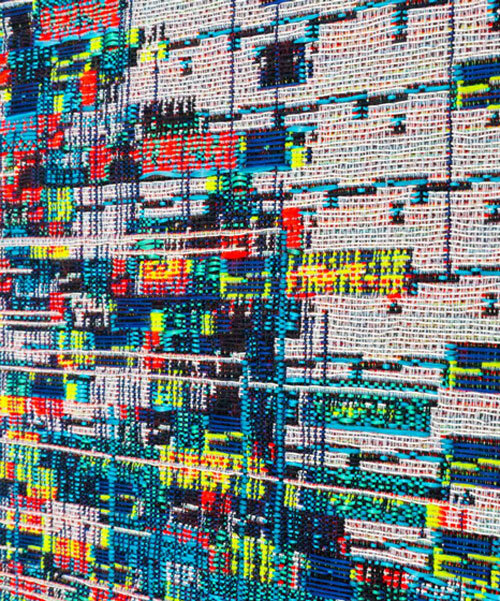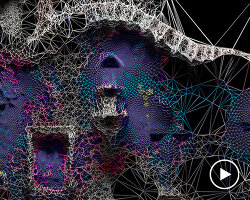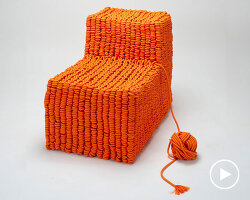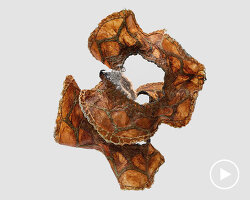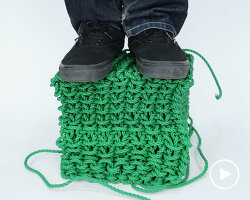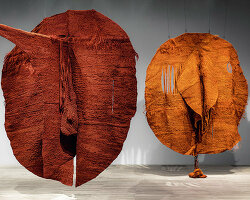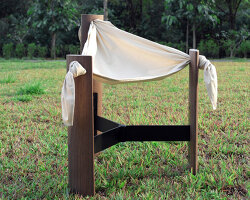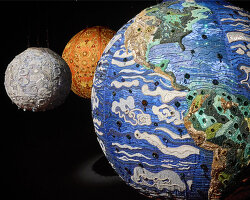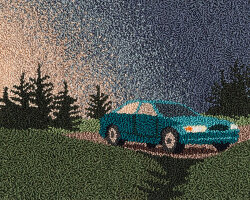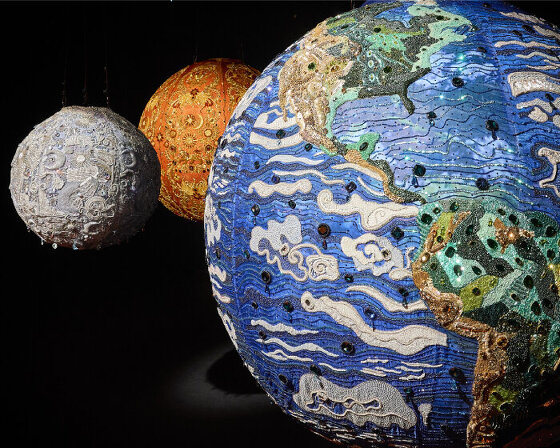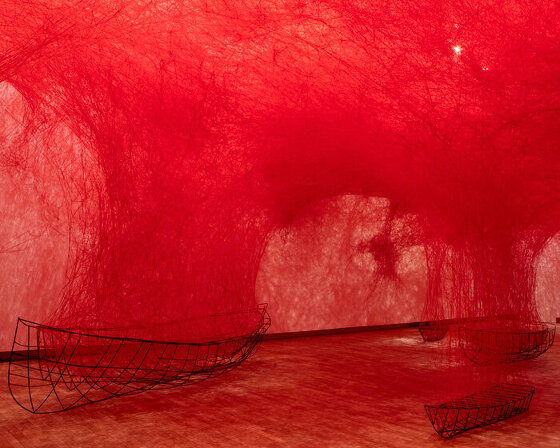Richard Vijgen links Microchip Design with Textile Weaving
Hyperthread by data artist Richard Vijgen examines the intersection of microchip design and textile weaving, drawing parallels between parametric chip design and the Jacquard Loom. The project reimagines the intricate structures of microchips as woven textiles, highlighting the shared binary logic (hole/no hole, thread up/down) that underpins both digital and textile technologies.
The Jacquard Loom, a precursor to modern computing, used punchcards, a chain of cardboard cards punched with holes to automate weaving, a system similar to today’s binary code. This method of controlling threads mirrors the layout of microchip circuits, where electrical currents flow through layers of silicon and metal, much like threads crossing in a loom. Though microchip patterns are a byproduct of their logical design, Vijgen’s project highlights their visual complexity and aesthetic potential.
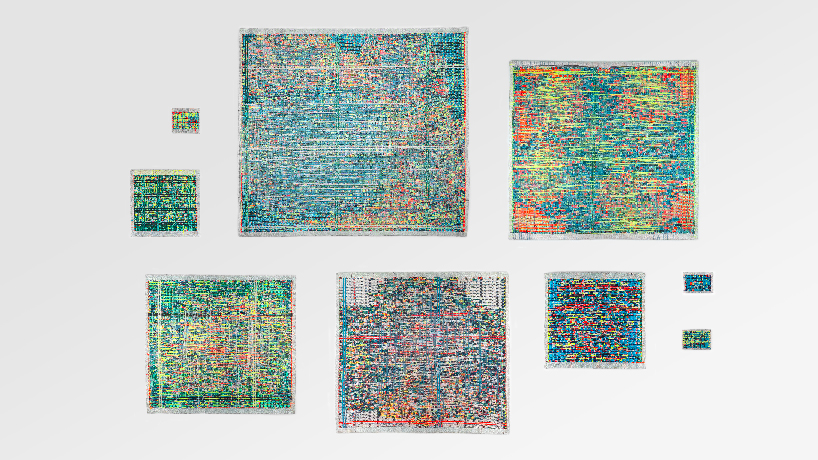
Hyperthread series overview | all images courtesy of Richard Vijgen
Hyperthread translates Code to graphical patterned Tapestries
In Hyperthread, public domain microchips, such as cryptographic key generators, CPUs, and flipflops, are visualized through open-source software that translates code into three-dimensional graphical patterns. These patterns, typically projected onto silicon at the nanometer scale, are instead converted into weaving instructions at a millimeter scale. The resulting tapestries, produced at Textiellab in the Netherlands, showcase the intricate designs of microchips, now enlarged 4,000 times and woven into colored yarns.
The tapestries vary in size, with the simplest chip, a flipflop, measuring just 18×16 cm, and the most complex, a Gaussian Noise Generator, spanning 159×144 cm. Despite the increased scale, the parametric patterns remain non-human-readable, though they reveal the varying complexity of microchips at a tactile, human scale. Through Hyperthread, data artist Richard Vijgen invites viewers to explore the visual, spatial, and material aspects of digital technology, linking the history of the Jacquard Loom with the complexities of modern chip design while using weaving as a medium to bridge the past and present of computational aesthetics.
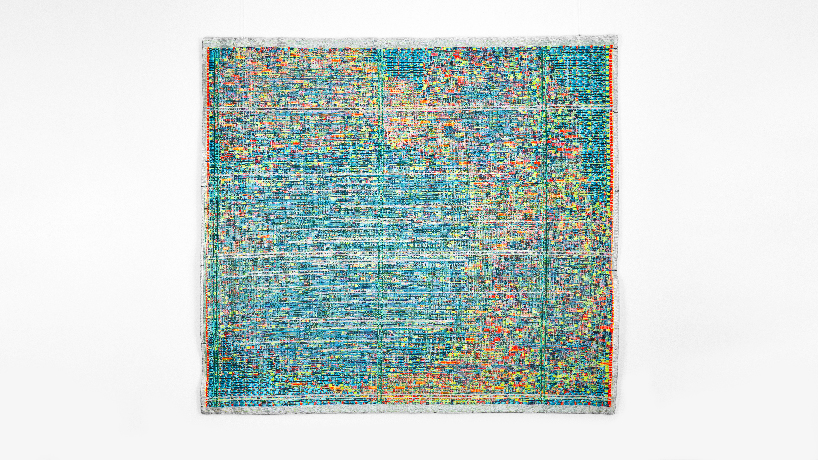
Hyperthread reimagines microchip designs as woven tapestries | Gaussian Noise Generator
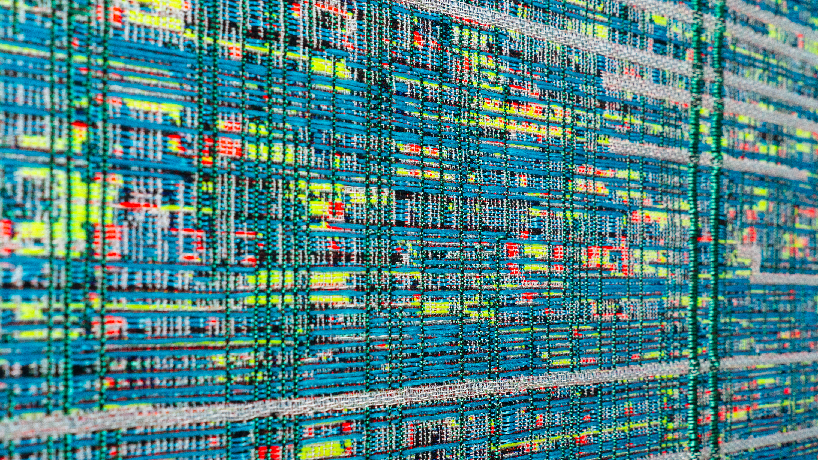
Richard Vijgen’s Hyperthread merges the Jacquard Loom with modern chip design | Gaussian Noise Generator
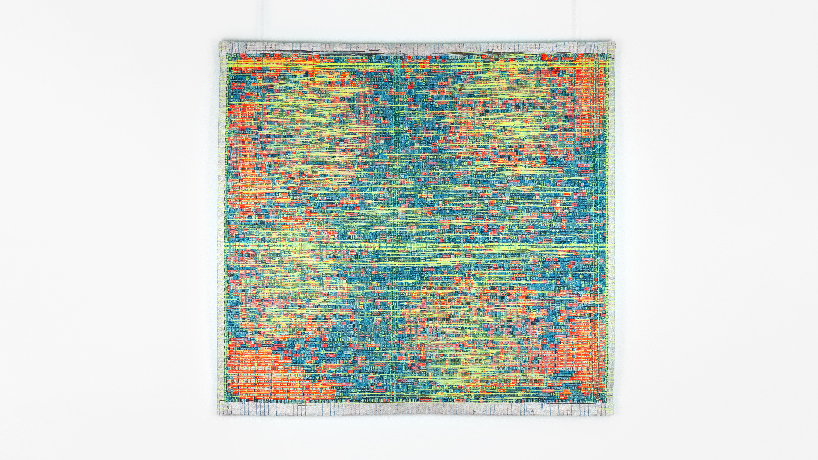
public domain microchips are translated into intricate textile patterns in Hyperthread | AES Key Generator
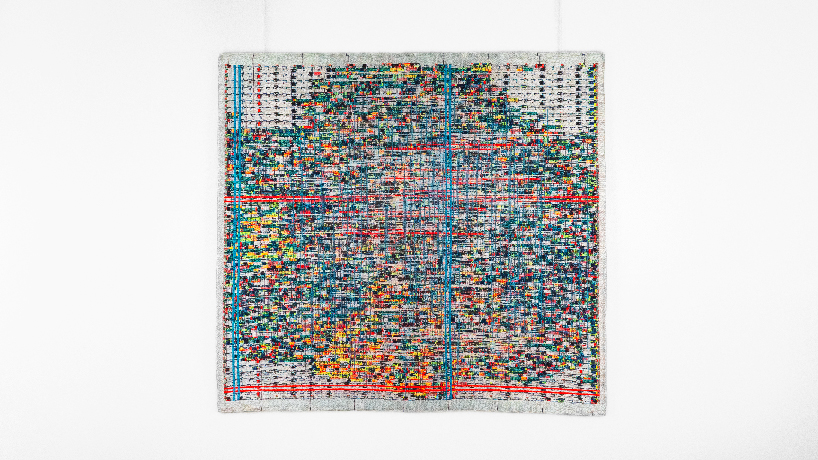
modern microchips with up to 100 layers are visualized as colorful tapestries | AES Key Generator
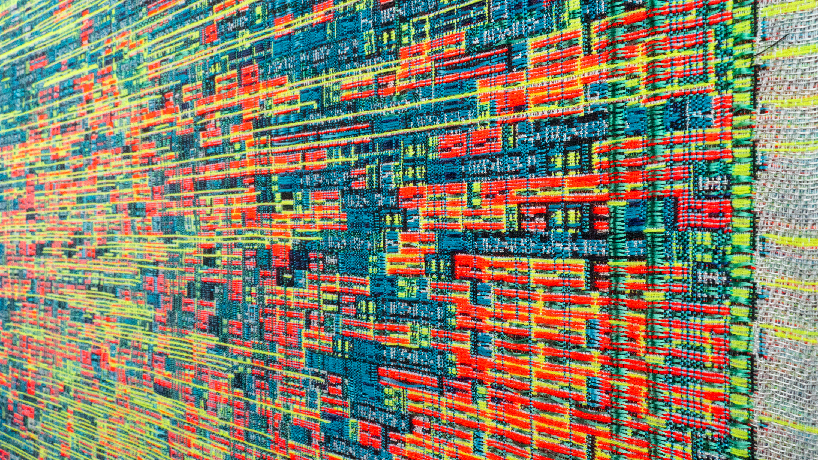
electrical currents in microchips resemble threads in a loom, creating complex patterns | 8080 emulator
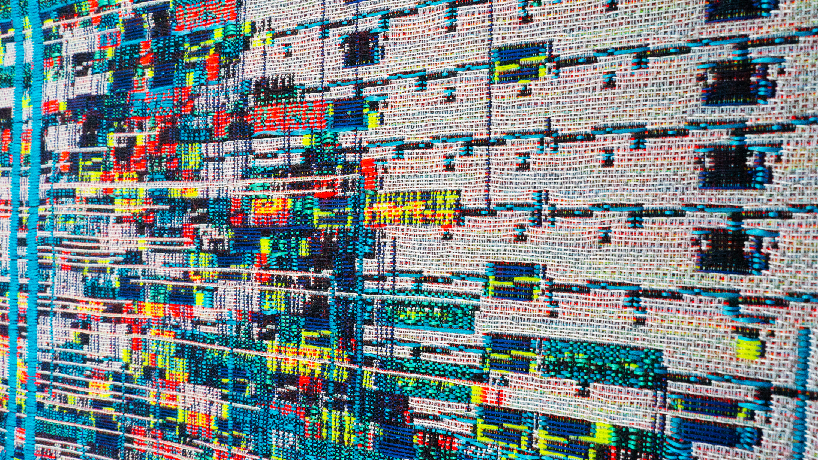
Hyperthread highlights the visual beauty of parametric chip designs | 8080 emulator

traditional weaving patterns meet digital complexity in Richard Vijgen’s work | i4004

Hyperthread uses open-source software to turn chip code into millimeter-scale weaving instructions | i4004
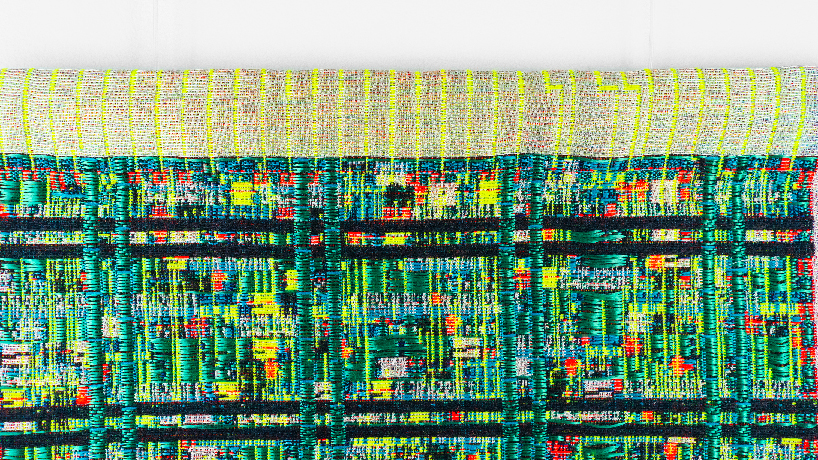
Hyperthread’s tapestries reveal the intricate designs of cryptographic keys, CPUs, and flipflops | Registers

Hyperthread’s textiles are blown up 4000 times to explore microchip aesthetics | SPM
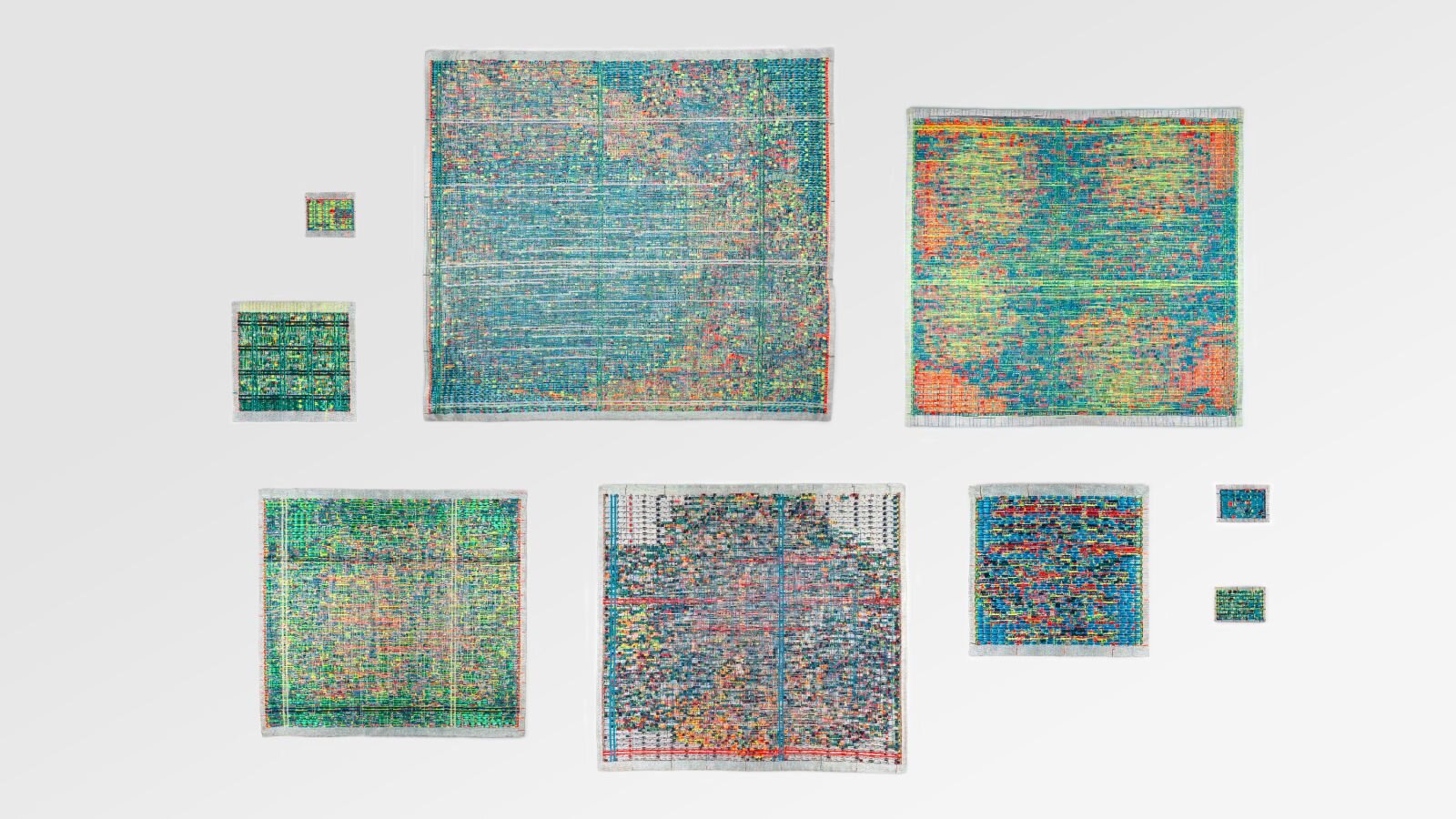
the project provides a tactile, human-scale view of digital microchip patterns | Hyperthread series overview
project info:
name: Hyperthread
designer: Richard Vijgen | @richardvijgen
designboom has received this project from our DIY submissions feature, where we welcome our readers to submit their own work for publication. see more project submissions from our readers here.
edited by: christina vergopoulou | designboom
